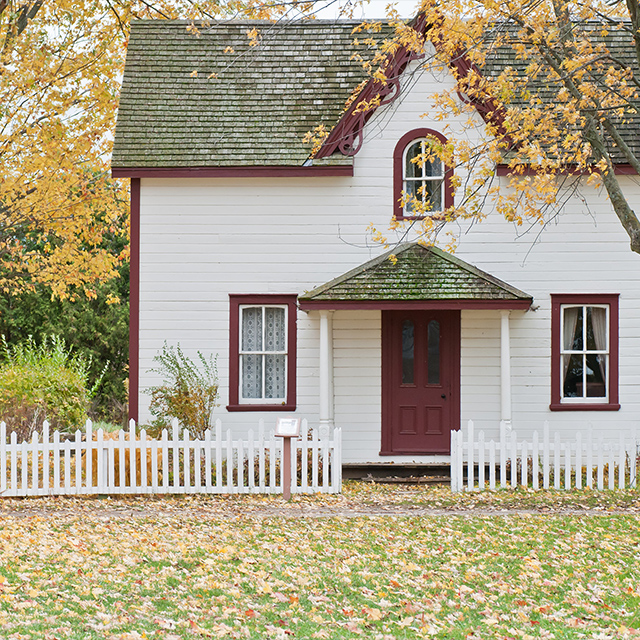I am going to be moving into a tiny house, which means everything my family owns must fit into a 270-square-foot space.
This is by no means a normal standard for minimalism. It’s really not a normal standard for many people, but it’s what will work for us, and that’s the beauty of minimalism: there are no standards. You’re free to choose the kind of minimalism that best suits your life.

Minimalism, in fact, looks different for everybody, with as many flavors as there are people who choose to live with less. Live with only 100 things? You can certainly do that. Eschew all decoration in your home? Sure, if that’s what you like. Dress with only 33 items? Give it a try.
Because there are no rules and no “right” way to do minimalism, it can be difficult for those just starting out. Many wonder: did they give away enough possessions? What is the right number?
But as we wander along the minimalist path for a while, we learn that no rules means freedom to set your life up the way you choose, and be the type of minimalist you want to be. And whatever type that is, it’s OK. There’s no such thing as a bad minimalist.
Luckily, no matter what type of minimalism you choose, the benefits are the same: more money, less stress, more time and better relationships.
There is a lot of advice on how to pare down and live with less, but only you can determine what level is ultimately right for you. Rather than try to live up to someone else’s definition, choose what is right for you and your family.
The Right Kind of Minimalism
So how do you figure that out? Here are 5 questions to help you:
1. Why do I want to be a minimalist in the first place?
What is driving you down this path? Do you want better relationships? Less clutter? To shake things up financially?
Whatever your reason, it’s important to understand why you’re pursuing the minimalist path, and to remind yourself of it periodically. When the path gets rocky, and you feel the urge to shop or become overwhelmed by the stuff that has managed to accumulate, remembering why you value minimalism will help you retain your focus and get back on track.
2. Exactly how small am I willing to go?
Maybe you don’t need to fit all your possessions in 270 square feet. Maybe you have a 2,500-square-foot house that you’d like to keep, but with less stuff in it. Or maybe you’d like to be able to shove everything in a backpack and go.
Only you can decide how little is enough, and you probably won’t get there on the first pass through all your things. Or the second. Or maybe even the third.
Minimalism is a life-long path. Sometimes there will be detours and sometimes the way will be level and well-lit. It can be easy to acquire more as you go along, so it takes vigilance to get down to your desired level and stay there.
That level will change as your life changes, too. What’s acceptable for you as a single person may not work for you in a partnership or with a family. Be flexible, but don’t use flexibility as an excuse for thoughtless consumption.
3. What will I absolutely not give up?
What’s that thing that you just won’t do without? For me, it’s my knitting and spinning.
Is it practical to have a spinning wheel in a 270-square-foot house? Nope.
Do I care? Nope.
Making yarn makes me happy, so the spinning wheel stays.
What is your version of the spinning wheel?
4. Will the choices I’m making save me money or buy me time?
This question will help you figure out why you’re on this path. Many come to minimalism through a need to get out of debt, so they start buying less and making do with what they have.
Others, like me, come to it through a desire to spend more time with those we love. Focusing less on shopping for stuff and then dealing with that stuff later has freed up time for me to have fun with my kids, not drag them from store to store. So I’m saving money and buying more time. Wins all around!
5. How will minimalism change my relationships?
When you’re not focused on stuff, you have time and resources freed up to focus on what really matters. And for most of us, what really matters are our relationships.
You might find that some relationships change as you say no to people more often so you can save money or do work that’s important to you. Some will support you; others won’t. Only you can decide what you’re OK with.
But you’ll likely find that your relationships get better. When we’re not spending time and money on buying things, we can spend them on experiences with those we love. Not having stuff tying you down lets you be free to form the kind of relationships that bring value to your life and ultimately leave you happier than if you had spent your resources acquiring things.
Answering these questions will help you determine what minimalism should look like for you. However it looks, you’re sure to reap the benefits of a happier, more fulfilling life. And that’s a standard everyone should aim for.